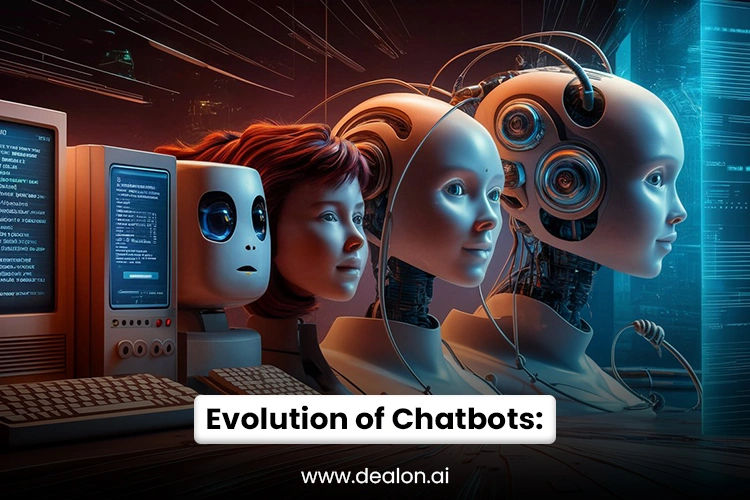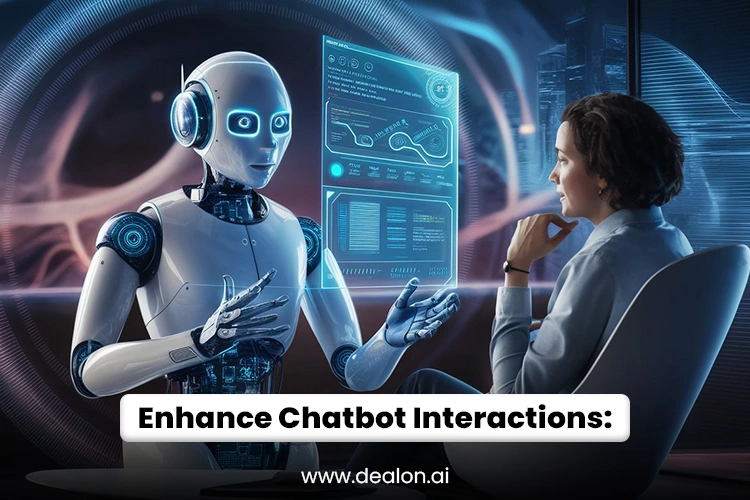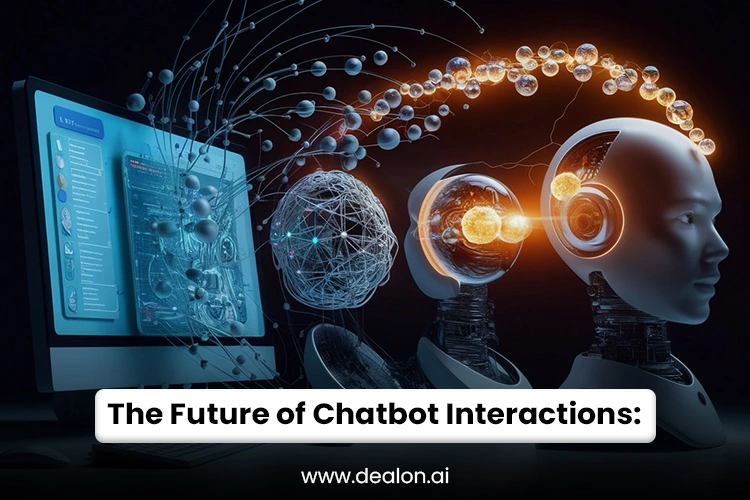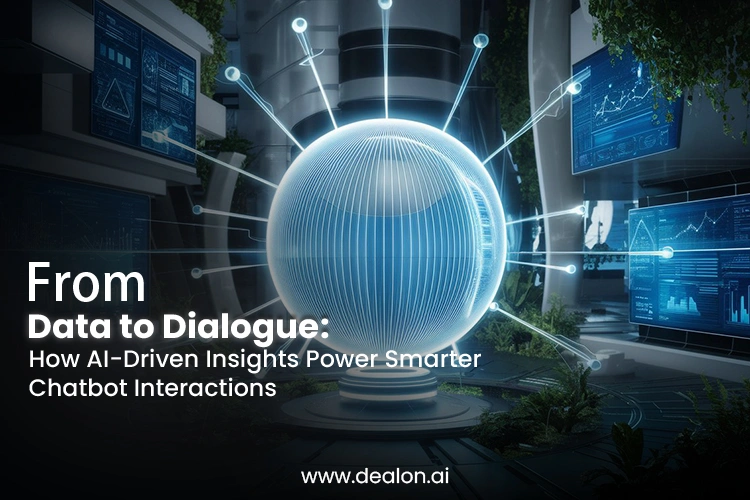Gone are the days when chatbots merely followed static scripts, offering generic responses to predefined queries. With the advent of AI, these virtual assistants have transformed into dynamic, intelligent systems capable of interpreting context, predicting user needs, and delivering highly personalized experiences. By utilizing the power of machine learning and NLP, AI-driven chatbots can now engage in complex dialogues, seamlessly adapting to the nuances of human conversation.
This shift is reshaping how businesses interact with customers and unlocking the potential for more innovative, data-driven communication strategies. AI allows chatbots to evolve continuously, analyzing vast user data and drawing actionable insights that help improve service quality, anticipate customer preferences, and foster meaningful connections. Businesses must leverage AI-powered chatbot interactions to stay ahead of the curve, providing faster, more effective, and deeply personalized service. This profound transformation drives innovation across industries, propelling AI-powered chatbots to the forefront of digital customer service excellence.
Also Read: Beyond Customer Service: Chatbots in Internal Business Operations and HR In 2025
The Evolution of Chatbots: From Simple Scripts to AI-Powered Dialogue

The journey of chatbots began in an era when these systems were little more than bare decision trees, operating on pre-programmed scripts and rigid, keyword-driven responses. These early chatbots were confined to offering solutions for simple, frequently asked questions or guiding users through predefined processes. While adequate for straightforward tasks, they often fell short when handling the intricacies of human communication, particularly in complex or nuanced scenarios. Users frequently encountered frustration when their inquiries did not align with the bot’s limited programming, leading to a lack of engagement and, at times, a negative customer experience.
One of the most significant advancements in this evolution is the incorporation of contextual understanding. AI-driven chatbots leverage vast datasets, including past interactions, user behavior, and real-time conversation history, to craft more natural and relevant responses. By analyzing patterns in language, tone, and even sentiment, these intelligent systems can discern what a user is asking and why they are asking it. This allows for a personalized response that aligns with the user’s needs and expectations.
For instance, if a customer inquires about a product, the chatbot can reference past browsing behavior or previous conversations to provide targeted suggestions or answers. This goes beyond mere transactional interaction, developing a better connection between the user and the brand. The chatbot’s ability to adapt and learn from ongoing conversations enhances its performance. Each interaction helps fine-tune its predictive capabilities, enabling the system to anticipate future needs and respond even more effectively in subsequent exchanges.
The integration of machine learning further accelerates this process. With each new conversation, the AI chatbot becomes increasingly adept at recognizing patterns and refining its conversational abilities. This continuous learning process means that the chatbot is not static but evolves with the users’ needs, ensuring it remains relevant and practical even as expectations shift.
In addition to enhancing the quality of chatbot interactions, AI has facilitated the ability for chatbots to provide multilingual support, broaden their scope of service, and handle more complex workflows, such as troubleshooting technical issues or assisting with account management. These advancements allow businesses to provide a more comprehensive and seamless customer experience, where users can engage in meaningful dialogue with systems that can process and respond to complex queries in real-time.
How AI-Driven Insights Enhance Chatbot Interactions

In an increasingly digital world, AI-driven chatbot interactions are revolutionizing how businesses engage with customers. Leveraging artificial intelligence (AI), these chatbots have evolved beyond simple query-response mechanisms to become intelligent, dynamic systems capable of delivering exceptional user experiences. Using advanced machine learning algorithms and NLP, AI chatbots offer various features that enhance customer satisfaction, streamline operations, and elevate engagement. One of the core pillars of this transformation is how AI-powered insights are integrated into chatbot interactions to create more personalized, contextually aware, and multilingual communication.
One of the most potent capabilities AI-driven chatbots bring is personalization at scale. Traditionally, personalized customer service required significant human intervention to tailor responses based on individual needs. AI, however, enables this personalization on a much broader and more scalable level. Chatbots can craft highly relevant and tailored responses by analyzing user data—such as previous interactions, preferences, browsing history, and purchase behavior.
This personalized approach increases user satisfaction and fosters a deeper connection between the brand and its customers. For example, an AI chatbot integrated into an e-commerce platform can remember a customer’s past purchases or browsing history and offer suggestions aligned with their tastes and needs. The chatbot can anticipate the customer’s interest, making the shopping experience smoother and more intuitive. This predictive capability ensures that each interaction feels tailored to the individual, making the user feel valued and understood.
Furthermore, delivering personalized recommendations in real time allows businesses to create a continuous dialogue with customers, building trust and engagement over time. AI chatbots transform routine interactions into meaningful, customer-centric exchanges by consistently offering relevant insights, products, or services.
Another significant advancement in AI-driven chatbots is their ability to retain and utilize context across conversations. Unlike traditional, rule-based systems that respond to individual queries in isolation, AI chatbots equipped with contextual understanding can track and reference past interactions, providing a more coherent and continuous conversation. This allows them to comprehend the underlying intent behind user inquiries better and respond in a relevant and intuitive manner.
For example, context retention is crucial in complex customer service scenarios where users may need to reference previous issues, request updates on ongoing support tickets, or engage in multi-step processes. AI-driven chatbots can seamlessly pull in details from past conversations and adjust their responses accordingly, making the interaction feel natural and conversational rather than transactional. This reduces user frustration, eliminates the need for customers to repeat information, and streamlines the resolution process. The ability to provide a holistic, fluid experience enhances customer satisfaction and reinforces the chatbot’s role as a trusted assistant.
AI-driven chatbots also excel in learning and improving in real time. By integrating machine learning algorithms, these systems evolve continuously by analyzing patterns in user behavior, queries, and feedback. AI chatbots refine their responses as they engage with users, improving accuracy, efficiency, and overall performance with each interaction.
This dynamic learning process allows chatbots to adapt to shifting customer needs and emerging trends without requiring manual updates. For instance, the chatbot may begin recognizing recurring questions or issues, enabling it to suggest better solutions over time. Additionally, it can identify patterns in user sentiment, adjusting its tone and approach to better align with customer emotions. With every conversation, the AI chatbot enhances its predictive capabilities, helping businesses stay ahead of customer expectations and providing faster, more accurate resolutions. This evolution fosters a proactive, rather than reactive, customer service experience.
As businesses scale globally, providing consistent support across different regions and languages becomes critical. AI-powered chatbots address this challenge by incorporating multilingual capabilities. Chatbots can use AI-driven translation tools and natural language processing techniques to engage with users in their preferred language, breaking down the language barrier and providing a more inclusive experience.
This feature mainly benefits international businesses, allowing seamless communication with a diverse customer base. Whether interacting with users in Spanish, Mandarin, or French, the chatbot can adjust its responses to the linguistic and cultural preferences of the individual user. Furthermore, multilingual chatbots can understand regional dialects and context-specific language variations, offering a deeper level of service and ensuring that customers from different cultures feel understood and valued.
By offering real-time, accurate translations, businesses can expand their reach, provide superior support, and create a more unified brand experience across global markets.
The Future of Chatbot Interactions: Predictive Analytics and Emotion Recognition

As artificial intelligence (AI) continues to transform the digital landscape, the future of chatbot interactions promises to be even more innovative and intuitive. Two of the most exciting advancements are integrating predictive analytics and emotion recognition. These technologies will not only elevate the functionality of chatbots but also create more human-like interactions, leading to more proactive, personalized, and empathetic customer service experiences.
One of the most groundbreaking developments in AI-driven chatbot technology is the ability to leverage predictive analytics. By analyzing vast amounts of user data—including historical interactions, browsing behavior, and even social media activity—AI-powered chatbots can predict a customer’s future needs, preferences, or questions. This ability enables chatbots to take a more proactive role in customer interactions, anticipating queries before they arise.
For instance, imagine a customer regularly buying a particular product on an e-commerce platform. Based on the customer’s purchase history and browsing patterns, the AI-driven chatbot can predict when the customer might be due for a reorder or when a new version of the product might be available. Instead of waiting for the customer to inquire, the chatbot could reach out with a personalized recommendation or reminder, enhancing the user experience by making it seamless and efficient.
This predictive capability enhances the customer experience and improves businesses’ operational efficiency. By anticipating customer needs, AI chatbots can help reduce wait times, streamline support, and enable more efficient resource allocation.
For example, by analyzing past queries and interactions, AI chatbots could identify frequently asked questions or common pain points, proactively addressing them through automated FAQs or personalized messages. This reduces the reliance on human intervention, allowing businesses to concentrate on more intricate tasks while ensuring that common issues are resolved quickly and efficiently.
While predictive analytics empowers AI chatbots to be more proactive, emotion recognition technology makes them more empathetic. AI-powered chatbots can gauge users’ emotional state and adjust their responses by analyzing a range of emotional cues, such as tone of voice, text patterns, or facial expressions (in video-based interactions). This allows the chatbot to react to the content of a conversation and the emotional context behind it, making interactions feel more authentic and human-like.
Upon frustration at the customer’s end, an AI chatbot with emotion recognition capabilities can detect this emotional shift and adjust its response to be more empathetic, providing reassurance and empathy and potentially escalating the matter to a human representative. Conversely, if the user seems happy or satisfied, the chatbot can mirror that positive energy by maintaining a more upbeat and conversational tone. This level of emotional sensitivity elevates chatbot interactions, especially in customer service contexts where emotions can run high.
Emotion recognition is beneficial in sensitive scenarios, such as handling complaints, supporting customers with personal issues, or managing service requests that require a delicate touch. Understanding and responding to emotional cues ensures that customers feel heard, valued, and understood—qualities that enhance brand loyalty and customer satisfaction.
Beyond textual communication, advancements in voice recognition and facial recognition technologies further amplify emotion detection. Through voice tone analysis, AI chatbots can discern emotions like frustration, joy, or confusion based on the pitch, speed, and modulation of a person’s voice. In video calls, facial expressions offer additional emotional insight, allowing the chatbot to adjust its response tone or suggest a human intervention if the emotional cues indicate distress or confusion.
When combined with predictive analytics and emotion recognition, AI-driven chatbots can offer a holistic experience that blends anticipation with empathy. Predictive analytics can ensure a user’s needs are met before realizing it. At the same time, emotion recognition allows the chatbot to adjust its demeanor and response to meet the user’s emotional state. Together, these features create a chatbot experience that feels intelligent and human-centric, fostering a deeper connection between the user and the brand.
For businesses, this integration of advanced technologies opens the door to a new era of customer interaction that is dynamic, personalized, and emotionally intelligent. Whether a chatbot is proactively offering product recommendations or providing empathetic support during a complex interaction, it will be able to meet users where they are—both in terms of their needs and their emotional state.
The Business Benefits of Smarter Chatbot Interactions
AI-driven chatbot interactions have quickly become a cornerstone of modern business operations, offering many advantages beyond improving customer service. Businesses can harness the full potential of more brilliant chatbot technologies by leveraging advanced machine learning, natural language processing (NLP), and predictive analytics. These AI-powered systems deliver efficiency and intelligence in managing customer interactions, translating into tangible business benefits across multiple fronts.
A key benefit of AI-powered chatbots is their ability to deliver personalized, responsive, and intuitive customer experiences. With the ability to analyze historical data and previous interactions, these chatbots can craft tailored responses that reflect the customer’s unique needs and preferences. As a result, customers enjoy more human-like and engaging interactions, leading to higher satisfaction levels. For instance, a chatbot deployed on an e-commerce platform can suggest products based on a user’s previous purchases, enhancing the shopping experience and creating a sense of personalized care. The capacity to resolve customer queries promptly and accurately fosters a positive emotional connection, which is crucial in building customer loyalty and trust.
As businesses grow or experience fluctuating customer demand, chatbots provide a scalable solution to meet rising volumes without compromising service quality. For example, during high-traffic periods such as sales events or product launches, AI chatbots can effortlessly manage many customer inquiries, ensuring that all queries are addressed promptly. This scalability empowers businesses to expand their customer service capabilities without hiring additional staff, allowing for seamless growth and sustained customer satisfaction.
AI chatbots are functional tools and rich data sources that can provide invaluable insights into customer behavior, preferences, and pain points. By monitoring the frequency and nature of queries, businesses can identify areas for improvement, detect emerging customer concerns, and even anticipate future demand. These insights can inform broader business strategies, from product development to marketing campaigns, helping companies make more data-driven decisions that align with customer expectations. Furthermore, tracking customer satisfaction and feedback through chatbot interactions offers a continuous feedback loop for businesses to fine-tune their strategies and improve customer engagement over time.
Conclusion
AI-driven chatbot interactions have revolutionized how businesses engage with customers, transforming these systems from simple scripted tools to intelligent, context-aware assistants capable of delivering personalized, efficient, and human-like experiences. By utilizing the power of machine learning, NLP, and predictive analytics, businesses can optimize customer service, reduce operational costs, and scale their operations without compromising quality.
As we’ve seen, AI-powered chatbots provide many benefits, including offering personalized recommendations, maintaining contextual understanding, and continuously improving through real-time learning. Furthermore, their multilingual capabilities and emotion recognition features push the boundaries of what’s possible, enabling businesses to deliver more inclusive and empathetic interactions.
Looking ahead, the future of chatbot interactions is bright, with innovations like predictive analytics and emotion recognition poised to make conversations even more intuitive and responsive. These advancements will further elevate customer satisfaction and empower businesses with deep data insights to inform strategic decision-making.

